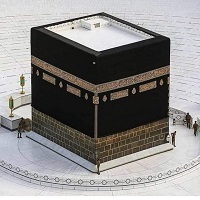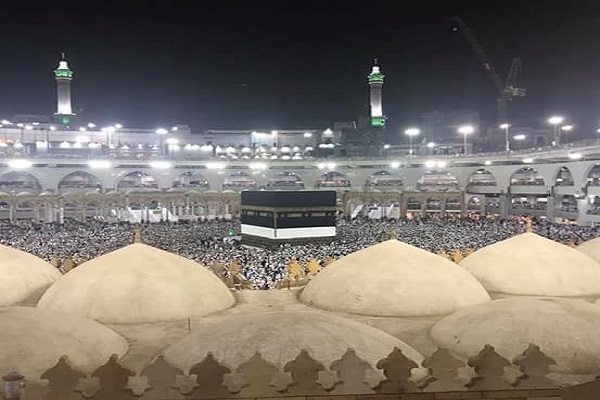The Hajj is a yearly Islamic pilgrimage to Saudi Arabia, which Muslims regard as their holiest city. It is a religious obligation that all adult Muslims must fulfill once in their lives if they are financially and physically capable of making the journey and assisting their families while they are away from home.
It is an Islamic pilgrimage to the Kaaba, or “House of Allah,” in the holy city of Mecca, Saudi Arabia. Along with Shahadah, Zakat, Sawm, and Salat, it is one of Islam’s Five Pillars. Furthermore, it is a public display of Muslim unity and obedience to Allah.
The term Hajj literally means “to attend a voyage,” and it refers to both the outer act of traveling and the internal act of making good intentions. This article contains all the information, including Hajj History.
| Title | Description |
|---|---|
| Details | |
| Type: | Islamic Event |
| Date: | 9 Zul Hajj |
| Location: | Sudia _ Makkha |
| Tawaf: | Seven times pilgrims circle around the Kaaba |
| Temporary tents: | In Mina |
| Helpline: | HCOI ; 24 X 7 |
| the first step for any pilgrim: | Ihram |
| incidents city during the Hajj : | to the city of Mecca |
| Kingdom’s Governance Statutes: | issued in 1414 H |
| genuflect in its direction during prayers: | world’s 1.3 billion Muslims genuflect |
| faiths traveled to revel at: | the site; in 630 A.D |
| The Hajj: | one of the five pillars of Islam |
| The first day of hajj: | 8 Zil Hijjah, the last month of the Islamic calendar |
| Ihram: | the first step for any pilgrim wishing to perform haj |
| Prophet Ibrahim and his son Ismail: | almost 4 000 years ago |
Table of Contents
Hajj History
Muhammad (P.B.U.H) laid the foundation for the current Hajj pattern. The Quran, on the other hand, claims that components of Hajj date back to Abraham’s time. As per the Islamic narrative, Allah ordered Abraham to drop his spouse Hajar and son Ismael in the ancient Mecca desert alone. Hajara hurriedly ran 7-times between the Marwah and Safa hills in quest of water but didn’t find it.
When she returned to Ismael in despair, she noticed the infant scraping the field with the help of his leg, leading to the bursting of a freshwater fountain beneath his foot. Later, Ibraham was told to construct the Kaaba and invite people to perform pilgrimage there.
Etymology
The Arabic letter haej is related to the dialect Hebrew: ⅄ŋ hag, that means ‘holiday’ and comes from the Semitic origin ח-ג-ג. The verb’s definition is ‘to circle.’ Circumambulation is used in Judaism in the Hakafot rite at the end of the Sukkot Festival and on Simchat Torah; Jewish brides usually do circumambulation with their husbands during the marriage ritual under the huppah.
The basis of the words celebration, festivity and holiday, was derived from this ritual. Likewise, in Islam, those who perform the Hajj in Mecca must circle the Kaaba and make sacrifices.
Mentioned in Quran
These incidents are mentioned in the Quran in ayah 2:124–127 & 22:27–30. The angel Gabriel is said to have carried the Hajra-e-Aswad (Black Stone) from paradise to be affixed to the Holy Kaaba.
Pillar of Islam
The idols surrounded the Kaaba in pre-Islamic Arabia, a period is known as jahiliyyah. Muhammad (P.B.U.H) led his people from Medina-Mecca in 630 AD, where they removed all pagan idols and subsequently devoted the structure to God.
Muhammad (P.B.U.H) made his final pilgrimage with a huge amount of followers in 632 AD, instructing them on procedures of Hajj. From this moment forward, Hajj got the status of Islam’s five pillars.
Pilgrims would congregate in the great towns of Iraq, Syria, and Egypt in caravans consisting of a great number of Hajis, frequently under governmental patronage, traveled to Mecca. Hajj caravans were protected by an armed force joined by physicians having the supervision of an amir al-hajj, especially with the arrival of the Mamluk Sultanate & its heir, the Ottoman Empire.
It was done to keep the caravan safe from natural disasters and Bedouin robbers and provide hajis with every necessary item. Muslim travelers such as Ibn Battuta and Ibn Jubayr have written thorough chronicles of medieval Hajj journeys.
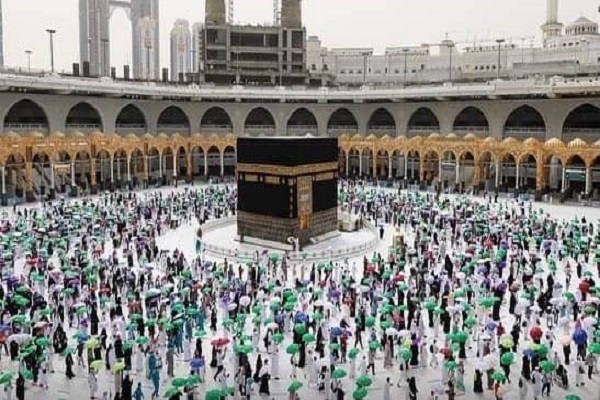
Hajj Timing
Muslim’s Islamic calendar (also known as the Haji calendar), which is centered on a lunar year, determines the Hajj date. The Hajj takes place every year over a ten-day period, beginning on 1st and finishing on 10th Dhu-al-Hijah, the Islamic calendar’s twelfth & final month.
Among these 10 days, the ninth Dhul-Hijjah is identified as the Day of Arafah and is also known as Hajj Day. The Western date for this holy obligation differs from year-year since the lunar Islamic calendar has almost eleven days less than a Western year.
As a result, the pilgrimage begins 11-days earlier every year on the Gregorian calendar. This causes the Hajj obligation to occur 2-times in one Gregorian year, which happens every thirty-three years.
Hajj Rituals
They are described in detail in fiqh literature, and pilgrims often use handbooks and experienced people guidance to effectively complete the Hajj requirements. Pilgrims follow Muhammad’s (P.B.U.H) example in conducting the Hajj rites and recall events related to Abraham.
Dress Code
Ihram
Ihram is the term given to a particular state of holiness and spiritual state that marks the beginning of each person’s ritual. Based on where they came from, Ihram is begun either when they get at the Miqat or before they arrive. When a pilgrim reaches the stage of Ihram, he or she must refrain from performing certain actions.
Males must wear 2-white seamless clothes, one draped around the waist and reaching below the knee, and the other wrapped over the left shoulder & fastened at the right side while in ihram. For females, this entails wearing everyday clothing that complies with the Islamic requirement of public attire, which includes exposing one’s hands and face.
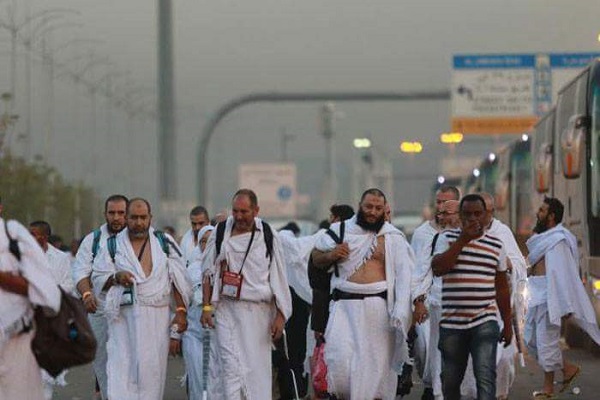
Restrictions during the State of Ihram
Other restrictions include not trimming one’s nails, using perfumes, shaving any body part, killing animals, harming plants, covering one’s head (for males) or hands and face (for females), getting married, and possessing weapons.
Purpose of Ihram
The Ihram is supposed to demonstrate that all pilgrims are equal in front of Allah, with no distinction between poor and rich. Because clothes are thought to show individualism and distinction and form superficial walls that divide persons, wearing such unsewn white garments completely detaches man from material indulgence and incorporates him in a world of spirituality and purity.
8th Dhu al-Hijjah (Day 1st of Hajj)
The pilgrims are recalled of their obligations on the eighth day of Dhu al-Hijjah. They don the Ihram clothes again and affirm their intention to travel to perform Hajj. Ihram’s prohibitions are now in effect.
Tarwiyah
The Tarwiyah Day coincides with the eighth day of Dhu al-Hijjah. Tarwiyah is named after a narration by Ja’far al-Sadiq. He explained why there was water on Arafat Mount on the eighth day of Dhu al-Hijjah. If pilgrims chose to remain at Arafat, he would’ve arranged Mecca water and had them carry it themselves. As a result, they advised each other to drink enough.
Ultimately, this day is known as Tarwiyah, which means “to satisfy thirst” in Arabic. The first day of the Hajj ceremony is known as Tarwiyah Day. Husayn ibn Ali began his journey to Karbala from Mecca on this day as well.
Tawaf
The Tawaf ritual entails walking around the Kaaba seven times counterclockwise. Pilgrims make an arriving tawaf at Al-Masjid Al-arm, either as a part of their Umrah or as a welcoming tawaf. Pilgrims include Hateem, which is located on the north side of the Holy Kaaba, on their tawaf journey. Each circuit begins with the Black Stone being kissed or touched.
Pilgrims also utter a prayer while pointing to the stone. If pilgrims are unable to kiss or touch the stone due to overcrowding, they may merely point to it with their hands on each circuit. Two Rakat prayers accompany tawaf at Muqam Ibrahim, a location inside the mosque near the Kaaba.
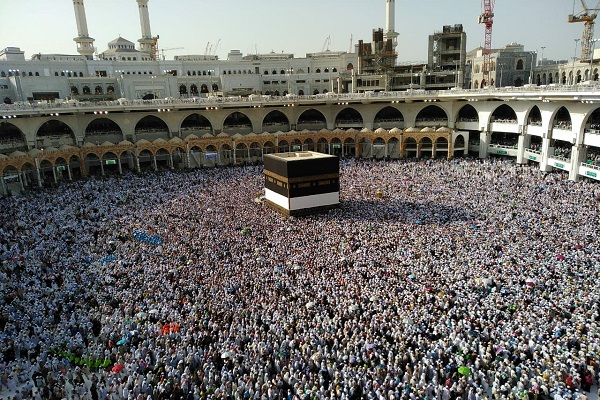
Mina
On the eighth of Dhu al-Hijjah, following the Morning Prayer, the pilgrims travel to Mina, and there they spend their entire day praying at noon, afternoon, evening, & night. They leave Mina the next morning to travel to Arafat.
9th Dhu al-Hijjah: 2nd day
The 9th of Dhul-Hijjah is identified as the ‘Day of Arafah,’ and is also known as the Hajj Day.
Arafat
Pilgrims reach Arafat, a plain and barren land 12 miles east of Mecca, before noon on the ninth Dhu al-Hijjah, where they remain inattentiveness: they offer prayers, beg forgiveness for their evil deeds, and seek God’s mercy.
They pay attention to the sermon delivered by Islamic scholars from near Jabal al-Rahmah, where Muhammad (P.B.U.H) delivered his life’s last sermon. This is called ‘standing before Allah,’ and it lasts from midday until sunset. It is one of the most important rites of Hajj.
Muzdalifah
Pilgrims must depart from Arafat after sunset for Muzdalifah without performing the Maghreb prayer. Between Mina and Arafat is a region known as Muzdalifah. When pilgrims arrive, they pray Maghreb & Isha together, stay at night praying and sleep under the open sky and collect pebbles for the Devil’s stoning ritual the next day.
10th Dhu al-Hijjah: Third day
The Pilgrims remain in Mina after coming back from Muzdalifah.
Ramy al-Jamarat
Going back to Mina, pilgrims execute symbolic stoning of Satan by hurling 7-stones at the tallest of the 3-pillars, Jamrat al-Aqabah, from sunrise to sunset. On this day, the remaining 2-pillars (Jamarah) aren’t stoned. Satan is thought to be represented by these pillars.
Animal slaughter act
Animals are slaughtered after Satan is stoned to recall the narrative of Abraham and Ismael. The pilgrims sacrifice the animal personally or supervise the slaughtering. Many pilgrims today purchase a sacrifice voucher before the beginning of the greater Hajj, allowing an animal to be sacrificed in the name of Allah on the tenth without the pilgrims being present physically.
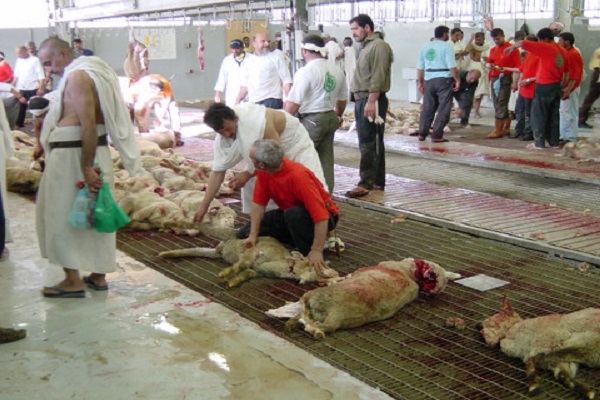
Hair Removal
Another major ritual is the trimming or shaving of head hair after the sacrifice of an animal. On the day of Eid-al-Azha, all male hajis trim their hair or shave their heads, while female pilgrims trim the tips of the hair.
Tawaf Ziyarat
The pilgrims return to Mecca’s Sacred Mosque for another tawaf, called Tawaf al-Ifadah, an integral aspect of Hajj, on the same or the next day. It represents haste to answer to Allah and express love for Him, which is a required aspect of the Hajj. The tenth night is spent at Mina.
11th Dhu al-Hijjah: Fourth day
The pilgrims hurl seven stones at all the three pillars in Mina from midday to sunset on the eleventh of Dhu al-Hijjah. It is called ‘ The “Stoning of the Satan.’
12th of Dhu al-Hijjah: 5th Day
The same pillar’s stoning takes place on the twelfth Dhu al-Hijjah as it did on the eleventh Dhu al-Hijjah. Before sunset on the twelfth, pilgrims may depart from Mina for Mecca.
13th Dhu al-Hijjah: final day
If they are unable to leave before sunset on the 12th or choose to stay later, they must repeat the stoning procedure on the thirteenth before going back to Mecca.
Tawaf al-Wadaa
Prior to leaving Mecca, Hajis do the Tawaf al-Wadaa, a farewell tawaf. ‘Wada’ means ‘to say goodbye.’ The pilgrims make seven counter-clockwise rounds around the Kaaba, attempting to kiss or touch the Kaaba if they are able to.
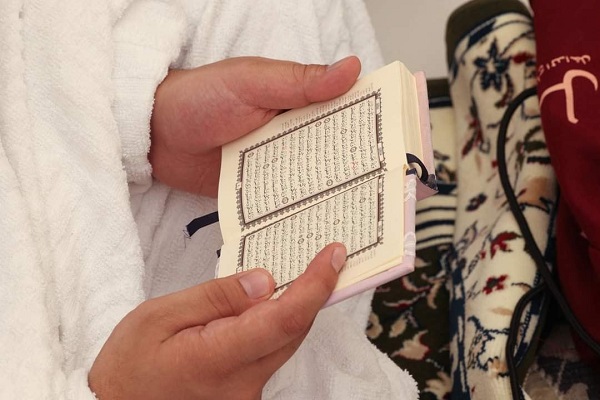
Traveling to Medina
Pilgrims could choose to move to Medina about 280 miles northeast and the Mosque of the Prophet, which includes Muhammad’s (P.B.U.H) tomb, as an optional component of Hajj. Visits to the Masjid al-Qiblatayn and Quba Mosque are also common.
Hajj Management
The Hajj and Umrah Ministry are in charge of the majority of Hajj-related matters. Providing the essential arrangements for the expanding number of pilgrims each year is a logistical challenge for Saudi Arabia’s government, which has spent over $100 billion on pilgrimage facilities since the 1950s.
The government has addressed and rectified major issues such as transportation, housing, health care, and sanitation by adopting various development initiatives, resulting in pilgrims now having access to contemporary facilities and being able to complete numerous rites with ease.
